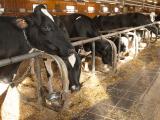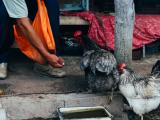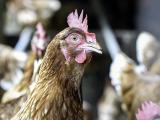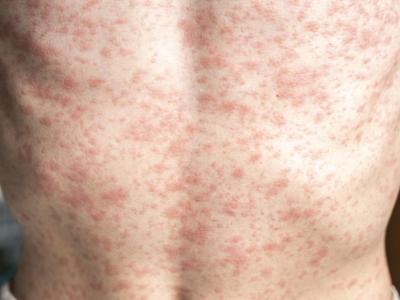Feb 25, 2004 (CIDRAP News) – A detailed report on 10 Vietnamese patients who had H5N1 avian influenza, including eight who died, suggests that no currently available drugs are very effective against the disease.
"Our experience suggests that supportive care may be the only option available," states the report by a long list of authors from Vietnam, Hong Kong, and the World Health Organization (WHO). The report was published online today by the New England Journal of Medicine.
The article says that four of five patients who were treated with the antiviral drug oseltamivir died, but treatment may have started too late. Two patients were treated with oral ribavirin, with no apparent benefit, and six of seven patients who received corticosteroids died. But the report says controlled clinical studies are needed to better assess the role of antiviral drugs and corticosteroids.
The article is a more detailed account of the same 10 cases that the WHO described in a report issued Feb 12. The patients, six from southern Vietnam and four from the north, averaged 13.7 years of age (range, 5 to 24 years). One patient has fully recovered, and another is still recovering, the report says.
Most had contact with poultry
Of nine patients who could provide a clear history, eight had close contact with poultry in the week before they fell ill, the authors report. Six of those eight directly handled chickens or ducks, though none of them worked on a large poultry farm or were involved in culling flocks. In the six cases for which the information was available, the patients fell ill within 2 to 4 days after they were exposed to poultry.
The most prominent clinical features when patients entered hospitals were fever, cough, shortness of breath, and, in seven cases, diarrhea. Laboratory findings included marked lymphopenia and thrombocytopenia, and six patients had either liver or kidney dysfunction or impaired glycemic control. All 10 patients had abnormal chest radiographs on hospital admission, and radiographic findings worsened dramatically afterward. In the fatal cases, the time from onset of illness to death ranged from 6 to 17 days.
Each of two patients who died, a 12-year-old girl and a 5-year-old boy, had a family member who also suffered a respiratory illness and died at about the same time, and H5N1 influenza was confirmed in one of those relatives. But all the cases probably resulted from bird-to-human, not person-to-person, transmission, the report says. Still, limited human-to-human spread within the families couldn't be firmly ruled out.
No illness was reported among family members of the other eight patients, though they had similar exposure to poultry. Nor were any cases reported among healthcare workers who cared for the patients. However, the authors said they couldn't rule out the possibility of mild or subclinical infections in those two groups.
Rapid tests for antigens to H5N1 influenza were tried in a few cases but were found to have low sensitivity, the article says. The available reverse transcriptase–polymerase chain reaction tests for the virus also have limitations, and "we urgently need new, properly evaluated, sensitive diagnostic tests," the report adds. For now, it says, the combination of clinical findings and a history of contact with poultry is more helpful in diagnosing patients with H5N1 influenza than available rapid diagnostic tests.
FAO says containment must continue
In other developments, the United Nations Food and Agriculture Organization (FAO) today said poultry outbreaks of avian flu are continuing in some Asian countries and called for continued control efforts. "The situation in some countries is still unclear and further epidemiological investigations are required to get the virus under control," the agency said.
The FAO estimated that 100 million birds have died or been sacrificed in the containment battle. The estimate includes 36 million each in Thailand and Vietnam, 5 million in China, 4 million in Pakistan, and 15 million in Indonesia.
A regional emergency meeting on avian flu is expected to draw officials from 23 countries to Bangkok Feb 26 through 28, the FAO said.
See also:
Tran TH, Nguyen TL, Nguyen TD, et al. Avian influenza A(H5N1) in 10 patients in Vietnam. N Engl J Med 2004;350(12):1179-88 (early online release) [Abstract]
Feb 12 CIDRAP News story on WHO report on 10 Vietnamese cases
Feb 25 FAO statement
http://www.fao.org/newsroom/en/news/2004/37727/index.html


















